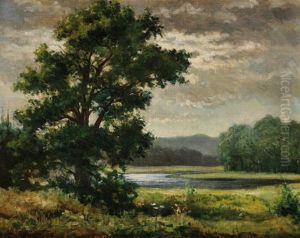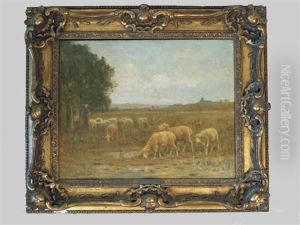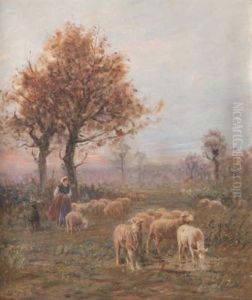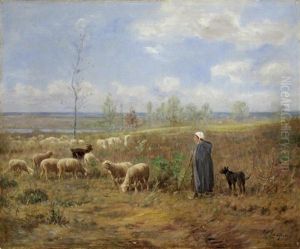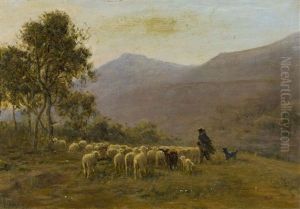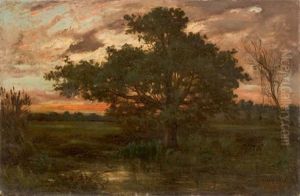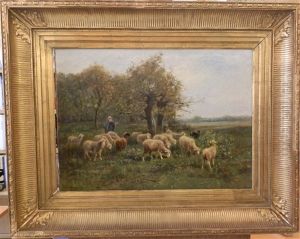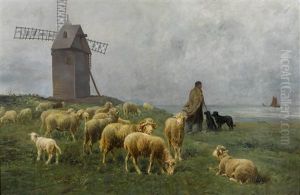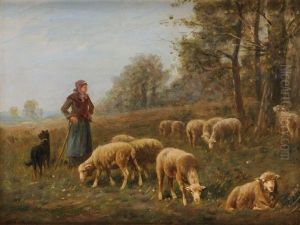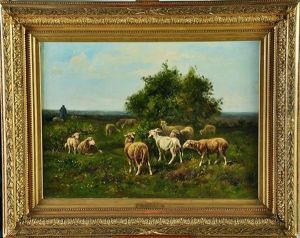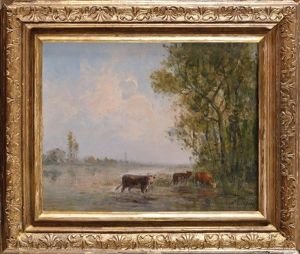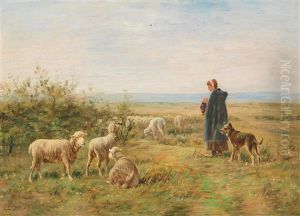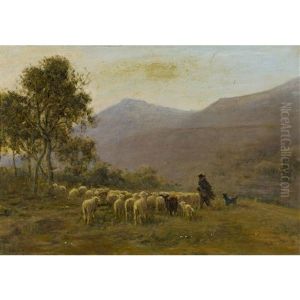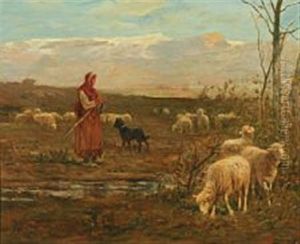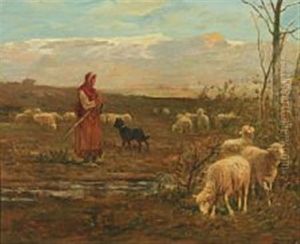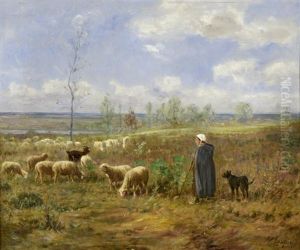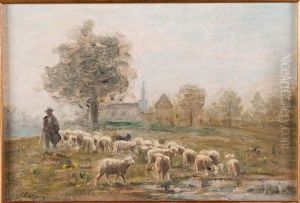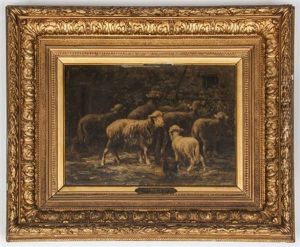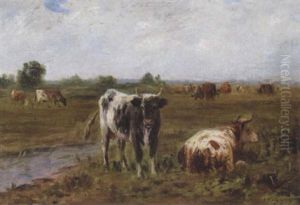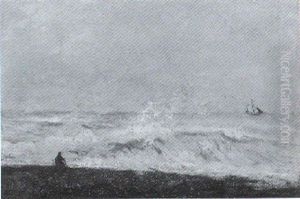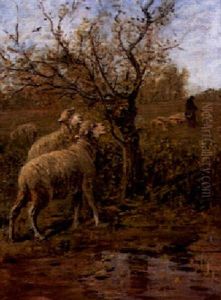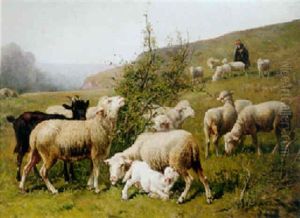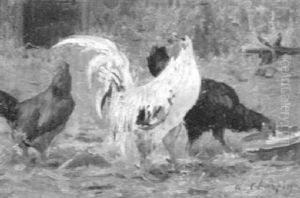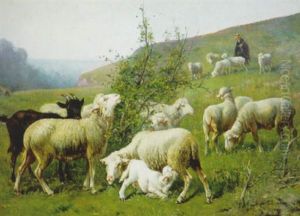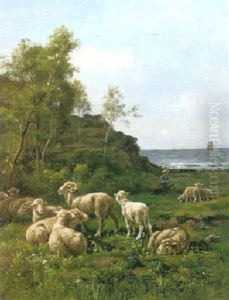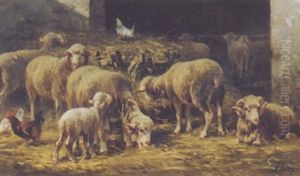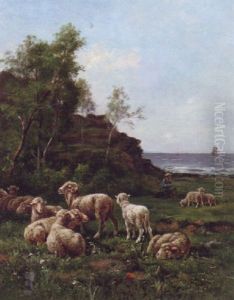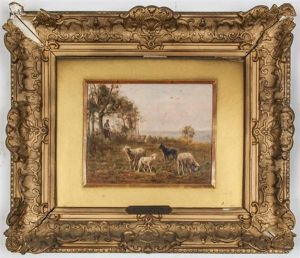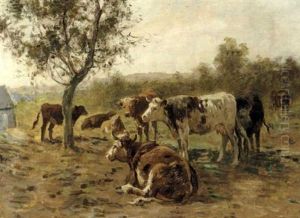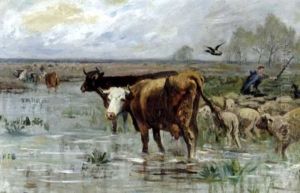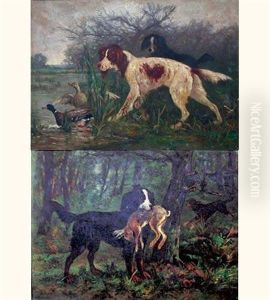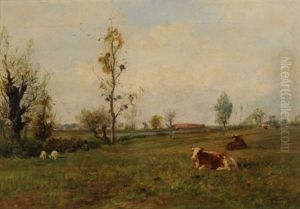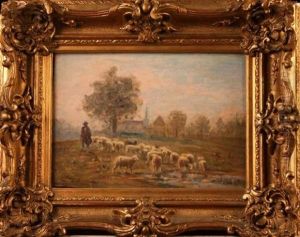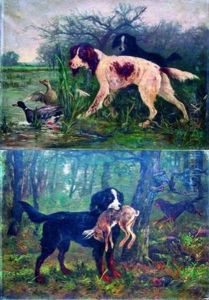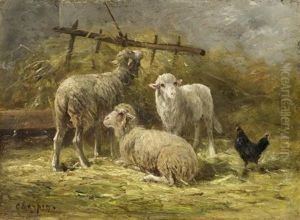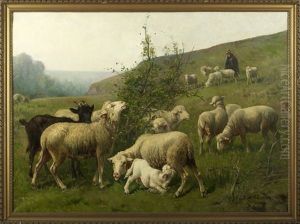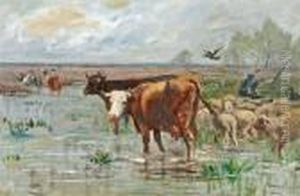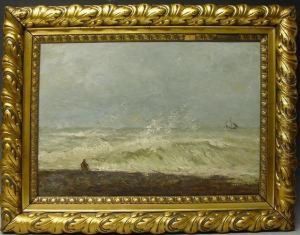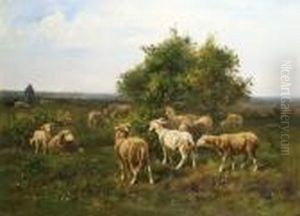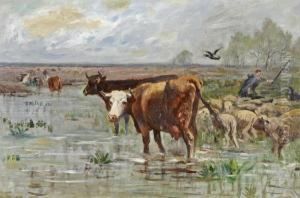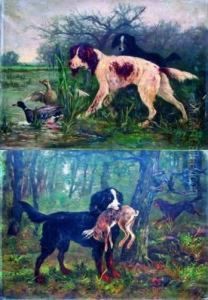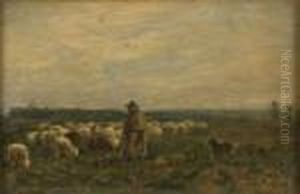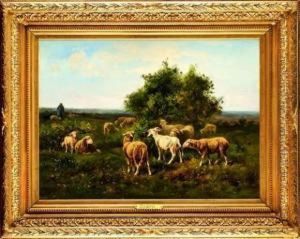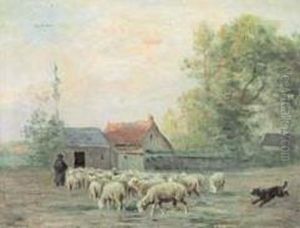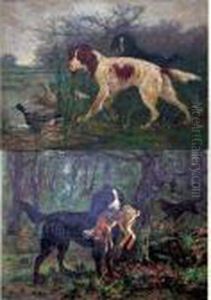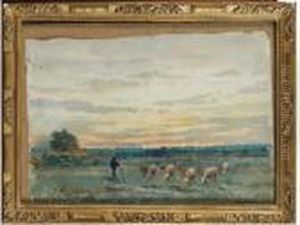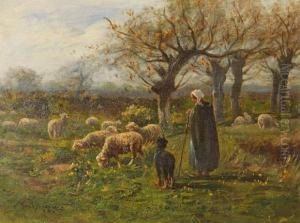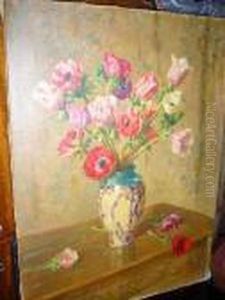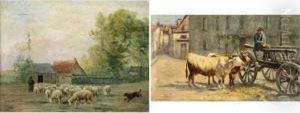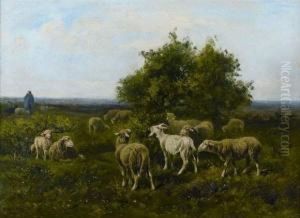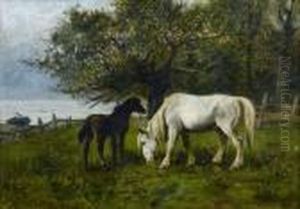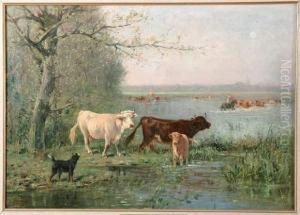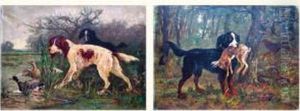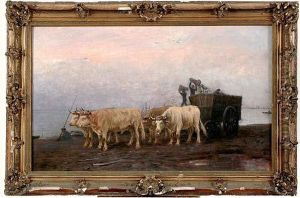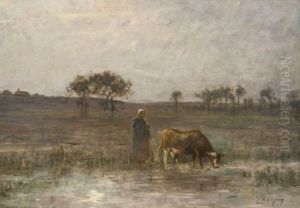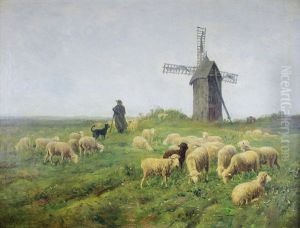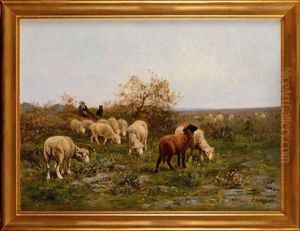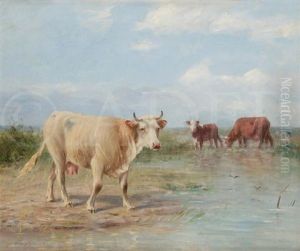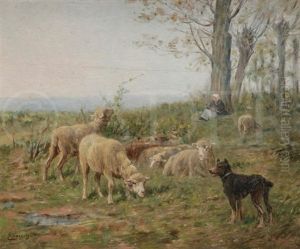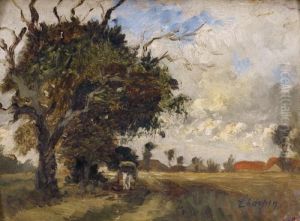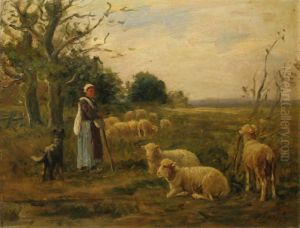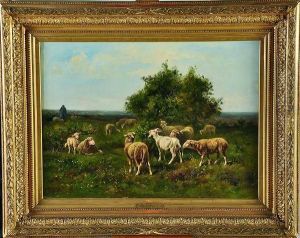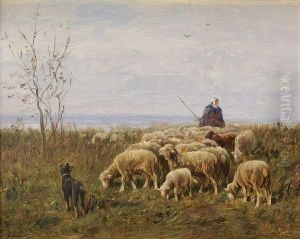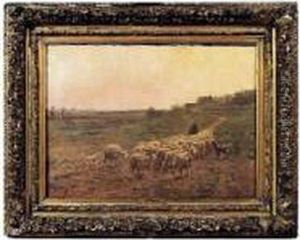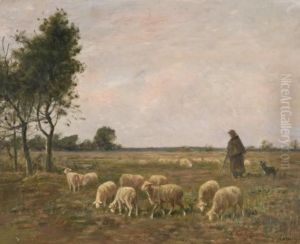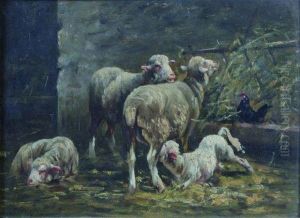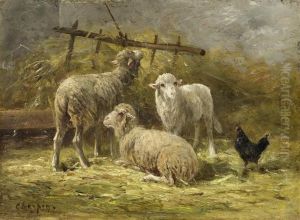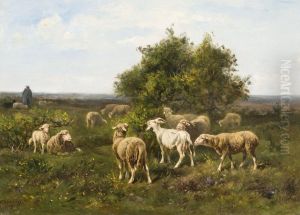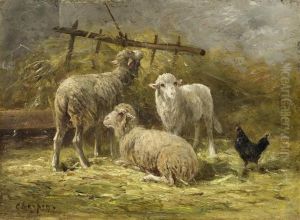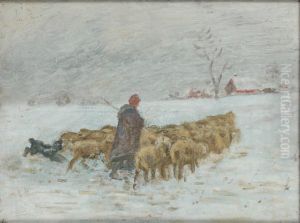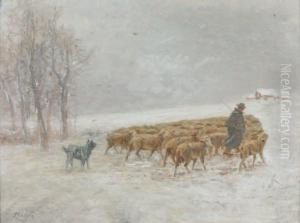Albert Charpin Paintings
Albert Charpin, born on May 20, 1842 in Grasse, France, was a notable French artist of the 19th century, primarily recognized for his pastoral landscape paintings and his contributions to the Barbizon School. Charpin's early life was marked by his discovery of the countryside around Grasse, which would serve as an enduring inspiration for his work. He moved to Paris to pursue his artistic education, studying under renowned painters such as François-Louis Français and Alexandre Cabanel.
Charpin's style was heavily influenced by the Barbizon School, known for its naturalistic approach to landscape painting and an emphasis on light and shadow. This group of artists, which included Jean-François Millet and Théodore Rousseau, sought to capture the rural French landscape in a direct and unadorned manner. Charpin's works often depicted the simple, unassuming life of peasants and their interactions with the land, showcasing his deep appreciation for the French countryside.
Throughout his career, Charpin exhibited his work in various salons and exhibitions. His paintings were met with critical acclaim, which helped establish his reputation as a leading pastoral painter. He was awarded several medals at the Paris Salon, including a gold medal at the Exposition Universelle in 1889, affirming his status as a celebrated artist of his time.
Albert Charpin's dedication to the Barbizon School's principles continued to be evident in his paintings throughout his life. His art remained consistent in its portrayal of rustic scenes and the agricultural life, resonating with audiences who found comfort and beauty in the familiar and everyday aspects of rural existence.
Later in life, Charpin returned to the South of France, where he continued to paint and draw inspiration from the landscape that had first captivated him as a young man. His works from this period continued to reflect the tranquility and timeless beauty of the countryside.
Albert Charpin passed away on January 7, 1924, in Grasse. His legacy as a pastoral painter and his contributions to the Barbizon School have left a lasting impression on the art world. Charpin's paintings continue to be admired for their gentle portrayal of rural life and their embodiment of 19th-century French landscape painting. His works are held in various collections and museums, where they continue to be studied and appreciated by art historians and enthusiasts alike.
